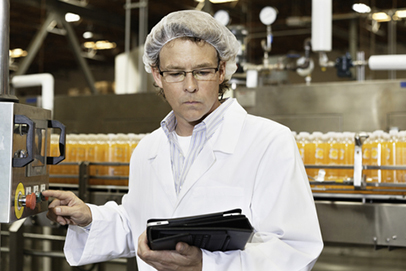Log documentation involving temperature is a necessary tool in any food processing environment. Whether it is cold holding, hot holding, cooking, cooling, refrigeration, freezer or time controlled, temperature logs not only shed a light on whether an employee understands the process, but are also a strong indicator of potential liability.  If left unchecked, no matter what log it is, you may be flirting with compromising someone’s health and exhibiting a lack of control. Temperature log documentation can become discoverable legal evidence in a court of law. If you don’t have the time, fudge the numbers, don’t record corrective actions or actually document 129 degrees F as your final internal cook temperature of raw chicken because you didn’t properly train your staff — well, you are exposed. Listed below are some tips regarding the review of temperature logs. Some may seem really basic, or even ridiculous, but in an effort to share best practices, take it for what it is worth. • In order to record any temperature on any log, a properly calibrated thermometer is needed. I can’t tell you how many times over the years I have asked food handlers for one, but they come up short. • Temperature logs need to be done at work, not on the couch in the living room with a cold adult beverage. • Make sure the cooling process starts at 135 degrees F and the second hour is at 70 degrees F or below. If not, a corrective action should be recorded such as the product was properly reheated or discarded. Make sure that the method of cooling, if accelerated such as an ice bath or blast chiller, is recorded on the log. • If the numbers are consistently the same day after day, week after week, and month after month, those logs are being dry-docked. • Employees should be cross-trained on temperature log documentation. Not just one person should be responsible. • Management should be properly trained on temperature log documentation. If they are not, what type of example are they setting? • Refrigeration logs not only reveal potential thermal abuse, but they can also give you a heads up if there is an issue with an extended defrost cycle that needs attention. • If there is a hot holding temperature issue, check the setting on the unit, or is that bad boy even turned on? • If you don’t have a refrigeration log that records product temperature in an emergency, such as a power outage, you are rolling the dice. • Ask food handlers basic relevant questions, such as what is the temperature danger zone, what is the proper temperature for hot/cold holding, and to what temperature should this product be cooked? Hopefully, you will not be unpleasantly surprised.
If left unchecked, no matter what log it is, you may be flirting with compromising someone’s health and exhibiting a lack of control. Temperature log documentation can become discoverable legal evidence in a court of law. If you don’t have the time, fudge the numbers, don’t record corrective actions or actually document 129 degrees F as your final internal cook temperature of raw chicken because you didn’t properly train your staff — well, you are exposed. Listed below are some tips regarding the review of temperature logs. Some may seem really basic, or even ridiculous, but in an effort to share best practices, take it for what it is worth. • In order to record any temperature on any log, a properly calibrated thermometer is needed. I can’t tell you how many times over the years I have asked food handlers for one, but they come up short. • Temperature logs need to be done at work, not on the couch in the living room with a cold adult beverage. • Make sure the cooling process starts at 135 degrees F and the second hour is at 70 degrees F or below. If not, a corrective action should be recorded such as the product was properly reheated or discarded. Make sure that the method of cooling, if accelerated such as an ice bath or blast chiller, is recorded on the log. • If the numbers are consistently the same day after day, week after week, and month after month, those logs are being dry-docked. • Employees should be cross-trained on temperature log documentation. Not just one person should be responsible. • Management should be properly trained on temperature log documentation. If they are not, what type of example are they setting? • Refrigeration logs not only reveal potential thermal abuse, but they can also give you a heads up if there is an issue with an extended defrost cycle that needs attention. • If there is a hot holding temperature issue, check the setting on the unit, or is that bad boy even turned on? • If you don’t have a refrigeration log that records product temperature in an emergency, such as a power outage, you are rolling the dice. • Ask food handlers basic relevant questions, such as what is the temperature danger zone, what is the proper temperature for hot/cold holding, and to what temperature should this product be cooked? Hopefully, you will not be unpleasantly surprised.
Sponsored by Marler Clark
